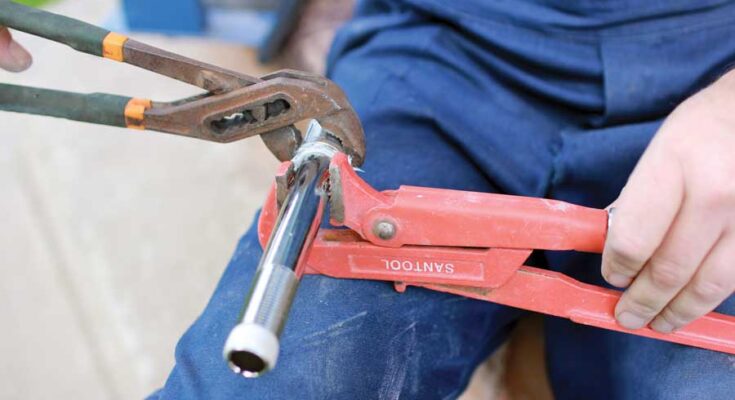When selecting a cutting tool, your decision matters. Let’s shed light on some critical factors to consider. The work material properties, such as hardness or toughness, weigh heavily in this process
Cutting Tool Material
While selecting your cutting tool, the material stands as a critical factor. It has a higher thermal and abrasion resistance than carbon steel but is also more expensive.
So, when selecting metals for machining tools that will endure high temperatures and constant friction, anticipate materials that can resist these challenging conditions. Carbon steel is a good option for low-speed operations, while high-speed steel is stronger and more durable if you have the budget to support it. It is known for its durability and ability to adapt to different shapes.
However, it does lose hardness when it reaches a certain temperature. Therefore, using coolant is essential for prolonging the life of the equipment.
Cutter Shape and Geometry
Cutter profiles vary widely, each offering unique benefits depending on the specific needs of your project. For instance, ball nose cutters attain precise contouring due to their spherical ends.
Don’t turn a blind eye to helix angle either; it drastically impacts chip removal rates and tool life span. Low angles are optimal for hard materials, while high ones favor softer counterparts. Consider also flutes, which depict the number of cutting edges a tool has; they markedly boost feed rates and chip evacuation. The tip radius should not be neglected either. Small radii offer fine finishes but may wear out quicker than larger-radius tips, which yield less finesse but provide enhanced strength.
Lastly, consider the rake angle. Positive rakes can reduce the amount of power needed. However, they are more prone to breakage. Negative rakes have a greater energy demand but are more resilient
Speed, Feed Rate, and Depth of Cut
When selecting a cutting tool, remember to consider the speed, feed rate, and depth of cut. The spindle’s speed defines your cutting velocity.
High speeds often produce superior surface finishes but can also increase tool wear. The feed rate refers to how quickly you move across the material while working on it. However, if the speed is set too fast or slow, issues may arise, such as premature dulling or poor-quality cuts.
Additionally, it will reduce the chances of mechanical failure, leading to a longer lifespan of machinery by minimizing stress on its components during operation processes.
Carbide Grade for Machining
Selecting the right carbide grade for machining requires careful assessment. The hardness level of a tool should be examined closely. Substrates with higher cobalt levels increase toughness, while lower levels contribute to greater hardness.
Notably, hard substrates possess excellent wear resistance but can become brittle, making them suitable only under stable conditions. On the contrary, tougher grades work well at reduced speeds and are more resistant to interruptions or unfavorable circumstances, though they may wear out quicker.
Conversely, choosing a substrate that is too hard for the job may not offer the desired level of impact resistance. Therefore, striking an optimal balance between toughness and hardness when selecting a substrate for specific applications is essential to ensure optimal performance.
Similarly, picking an excessively hard substrate could cause minute fragments along the cutting edge, leading to catastrophic failure.
These factors must be closely scrutinized when selecting carbide grades as part of your crucial decision-making process before beginning any machining project.
With Suncoast Precision Tools, you can easily pick the right tool. You need to consider your workpiece’s material hardness and toughness, as well as the flank wear rate; it’s essential! Don’t forget to take into account the cutting speed and feed rates, as they also affect performance.


